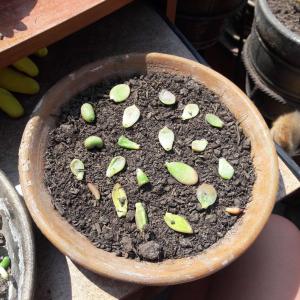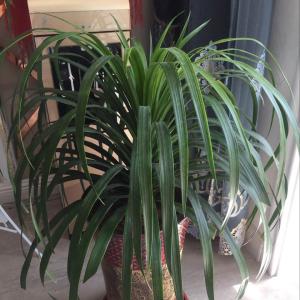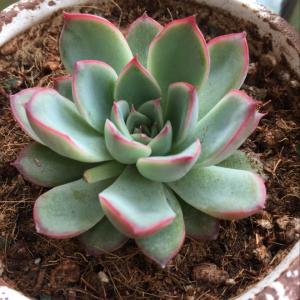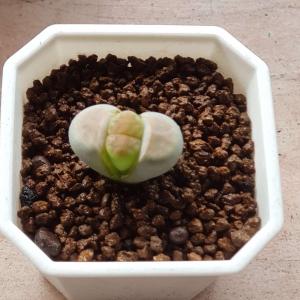文章
Miss Chen
2018年03月08日

Description: This is a shrub about 1-3½' tall that has ascending to widely spreading branches. The bark of branches and twigs is gray or reddish brown, more or less smooth, and terete with scattered white lenticels. Young shoots are light green to light brown, terete, and very pubescent, becoming less pubescent with age. Alternate leaves occur along the twigs and shoots. These leaves are 2-6" long and ¼-1" across; they are narrowly oblong to oblong-elliptic in shape and pinnatifid with 3-8 pairs of oblique lobes. The upper surface of mature leaves is medium green and glabrous to slightly short-pubescent, while the lower surface is light green and nearly glabrous to short-pubescent. Immature leaves, in contrast to the mature leaves, are yellowish green and more heavily covered with silky hairs (especially along their undersides). The leaves also have glandular resin-dots; crushed leaves and twigs are fragrant. The petioles are less than ½" in length, light green, more or less pubescent, and relatively stout.
Sweet Fern can be dioecious or monoecious with unisexual florets that are arranged in greenish catkins toward the tips of twigs or young shoots. The male catkins are ¾-1½" long and cylindrical in shape, consisting of numerous male florets and their overlapping scales. Each male floret has 4-8 stamens on short filaments; it is partially hidden by a small scale (about 2-3 mm. in length) that is broadly ovate and ciliate along its margins. The female catkins are about ½" long and ovoid to globoid in shape, consisting of a small cluster of female florets and their scales. Each female floret has a naked ovary with a pair of stigmata at its apex; it is partially hidden by a small scale (about 2-3 mm. in length) that is broadly ovate and ciliate along its margins. In addition to this scale, there is a pair of linear bractlets that originate from the base of the ovary; they are up to twice the length of the scale. The blooming period occurs from mid- to late spring as the vernal leaves begin to develop, lasting about 2 weeks. Afterwards, the female catkins are replaced by bristly fruits that span about ¾" across; each fruit contains a cluster of nutlets at its center and numerous bristly bractlets. At maturity, individual nutlets are 3-5 mm. long, ovoid in shape, truncate-dentate on one side, and rounded on the other. TheDistribution Map root system can develop clonal offsets from underground runners. Clonal colonies of plants are common from such offsets.
Cultivation: The preference is full or partial sun, mesic to dry conditions, and sandy soil. The root system of Sweet Fern can fix nitrogen in the soil. This shrub is an alternate host of a blister rust that infects Jack Pine (Pinus banksiana).
Range & Habitat: The native Sweet Fern is rare in Illinois, where it is largely restricted to the NE section of the state. It is state-listed as 'endangered.' Habitats include upland sand prairies, sandy shrub prairies, and sandy upland savannas. Dominant trees in these savannas are oak trees (especially Black Oak) and sometimes pine trees are present (especially Jack Pine). Sweet Fern benefits from occasional wildfires as this reduces competition from taller shrubs and trees. The seeds can lie dormant in the soil for several decades while waiting for such wildfires to occur.
Faunal Associations: Various insects feed on the foliage and other parts of Sweet Fern. These species include the leaf beetles Cryptocephalus insertus, Neochlamisus comptoniae, and Paria frosti (Clark et al., 2004). The leafhopper Eratoneura parallela occasionally sucks sap from this shrub. The caterpillars of several moths feed primarily on the leaves of Sweet Fern, including Cleora sublunaria (Double-Lined Gray), Cyclophora pendulinaria (Sweetfern Geometer), Coleophora comptoniella (Sweetfern Casebearer Moth), Agonopterix atrodorsella (Brown-Collared Agonopterix), Nemoria rubrifrontaria (Red-Fronted Emerald), and Catocala antinympha (Sweetfern Underwing); see the Moth Table for a more complete list of these species (Covell, 2005; Wagner, 2005). Some vertebrate animals also use Sweet Fern as a source of food. The Ruffed Grouse and Greater Prairie Chicken feed on the buds, catkins, and foliage, while White-Tailed Deer and the Cottontail Rabbit browse on the twigs and foliage (Martin et al., 1951/1961). Because of its tendency to form colonies, Sweet Fern also provides good cover for various animals.

Photographic Location: A garden at the Kitty Todd Nature Preserve in NW Ohio.
Comments: This shrub belongs to a monotypic genus that is endemic to North America. It is related to the Bayberry shrubs (Myrica spp.) that are found on sandy coastlines along the Atlantic Ocean and Gulf of Mexico. Unlike Sweet Fern, Bayberry shrubs produce waxy fruits. In spite of its common name and the appearance of its attractive leaves, Sweet Fern is not related to the true ferns. Perhaps its most notable characteristic is the pleasant fragrance of its crushed leaves and twigs.
Sweet Fern can be dioecious or monoecious with unisexual florets that are arranged in greenish catkins toward the tips of twigs or young shoots. The male catkins are ¾-1½" long and cylindrical in shape, consisting of numerous male florets and their overlapping scales. Each male floret has 4-8 stamens on short filaments; it is partially hidden by a small scale (about 2-3 mm. in length) that is broadly ovate and ciliate along its margins. The female catkins are about ½" long and ovoid to globoid in shape, consisting of a small cluster of female florets and their scales. Each female floret has a naked ovary with a pair of stigmata at its apex; it is partially hidden by a small scale (about 2-3 mm. in length) that is broadly ovate and ciliate along its margins. In addition to this scale, there is a pair of linear bractlets that originate from the base of the ovary; they are up to twice the length of the scale. The blooming period occurs from mid- to late spring as the vernal leaves begin to develop, lasting about 2 weeks. Afterwards, the female catkins are replaced by bristly fruits that span about ¾" across; each fruit contains a cluster of nutlets at its center and numerous bristly bractlets. At maturity, individual nutlets are 3-5 mm. long, ovoid in shape, truncate-dentate on one side, and rounded on the other. TheDistribution Map root system can develop clonal offsets from underground runners. Clonal colonies of plants are common from such offsets.
Cultivation: The preference is full or partial sun, mesic to dry conditions, and sandy soil. The root system of Sweet Fern can fix nitrogen in the soil. This shrub is an alternate host of a blister rust that infects Jack Pine (Pinus banksiana).
Range & Habitat: The native Sweet Fern is rare in Illinois, where it is largely restricted to the NE section of the state. It is state-listed as 'endangered.' Habitats include upland sand prairies, sandy shrub prairies, and sandy upland savannas. Dominant trees in these savannas are oak trees (especially Black Oak) and sometimes pine trees are present (especially Jack Pine). Sweet Fern benefits from occasional wildfires as this reduces competition from taller shrubs and trees. The seeds can lie dormant in the soil for several decades while waiting for such wildfires to occur.
Faunal Associations: Various insects feed on the foliage and other parts of Sweet Fern. These species include the leaf beetles Cryptocephalus insertus, Neochlamisus comptoniae, and Paria frosti (Clark et al., 2004). The leafhopper Eratoneura parallela occasionally sucks sap from this shrub. The caterpillars of several moths feed primarily on the leaves of Sweet Fern, including Cleora sublunaria (Double-Lined Gray), Cyclophora pendulinaria (Sweetfern Geometer), Coleophora comptoniella (Sweetfern Casebearer Moth), Agonopterix atrodorsella (Brown-Collared Agonopterix), Nemoria rubrifrontaria (Red-Fronted Emerald), and Catocala antinympha (Sweetfern Underwing); see the Moth Table for a more complete list of these species (Covell, 2005; Wagner, 2005). Some vertebrate animals also use Sweet Fern as a source of food. The Ruffed Grouse and Greater Prairie Chicken feed on the buds, catkins, and foliage, while White-Tailed Deer and the Cottontail Rabbit browse on the twigs and foliage (Martin et al., 1951/1961). Because of its tendency to form colonies, Sweet Fern also provides good cover for various animals.

Photographic Location: A garden at the Kitty Todd Nature Preserve in NW Ohio.
Comments: This shrub belongs to a monotypic genus that is endemic to North America. It is related to the Bayberry shrubs (Myrica spp.) that are found on sandy coastlines along the Atlantic Ocean and Gulf of Mexico. Unlike Sweet Fern, Bayberry shrubs produce waxy fruits. In spite of its common name and the appearance of its attractive leaves, Sweet Fern is not related to the true ferns. Perhaps its most notable characteristic is the pleasant fragrance of its crushed leaves and twigs.
0
0
























